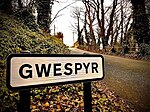Big Pool Wood

Big Pool Wood is a Nature reserve located near Gronant, Flintshire, Wales. The site is part of the Dee Estuary SSSI & SAC due to the unique wildlife and organisms found in the area. The reserve is centered around a pond which paths and boardwalks encircling it. There are a number of bird hides located around the reserve. The site is part of the Designated Special Area of Conservation – a protected region that supports waterfowl and waders in the winter. Big Pool Wood both provides shelter and cover for some of these wetland birds and forms part of a wildlife corridor that stretches along the North Wales coast all the way to Anglesey; particularly important for migratory birds.
Excerpt from the Wikipedia article Big Pool Wood (License: CC BY-SA 3.0, Authors, Images).Big Pool Wood
Mostyn Road,
Geographical coordinates (GPS) Address Nearby Places Show on map
Geographical coordinates (GPS)
| Latitude | Longitude |
|---|---|
| N 53.345 ° | E -3.35 ° |
Address
Mostyn Road
LL19 9TB , Llanasa
Wales, United Kingdom
Open on Google Maps








